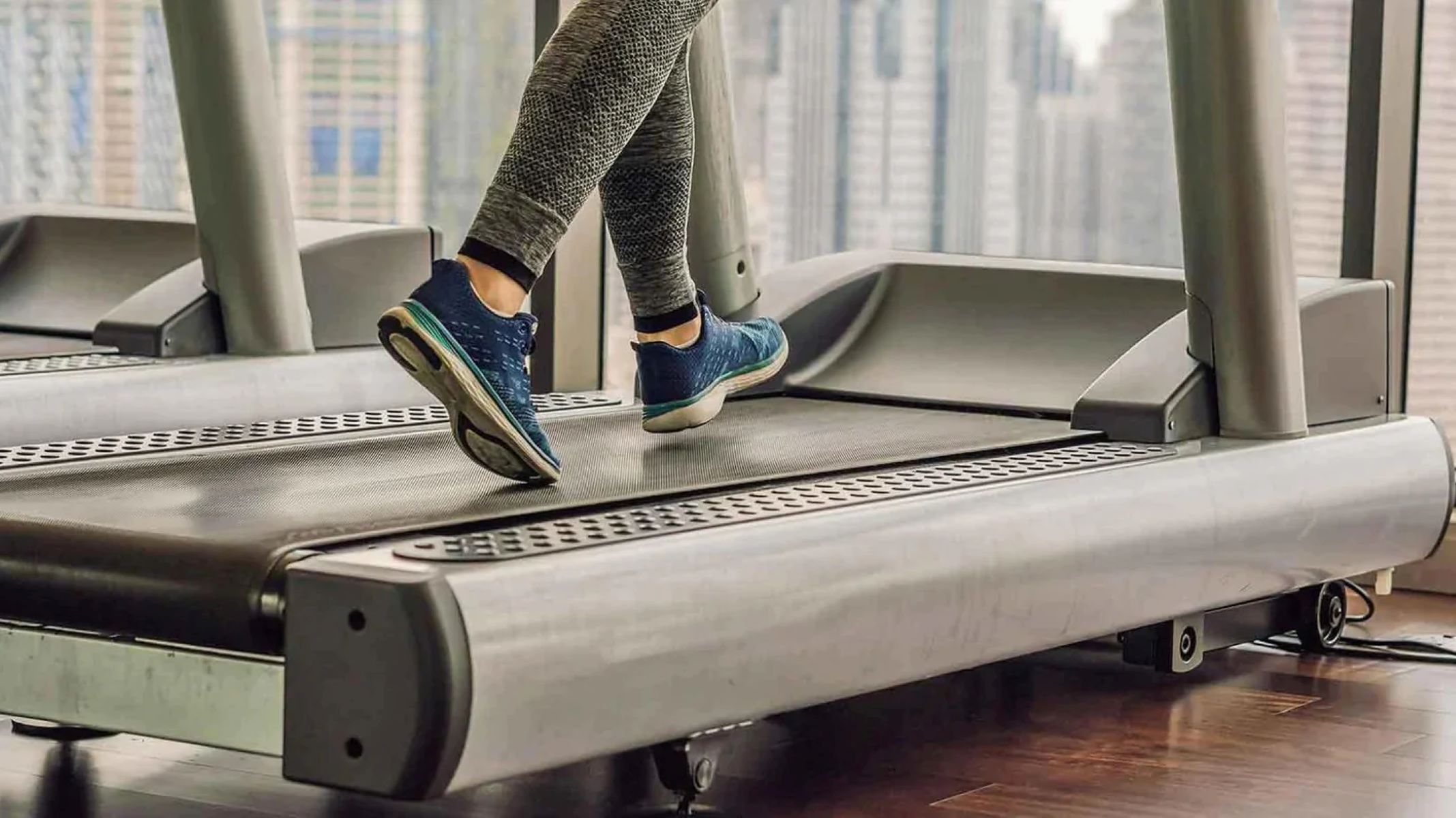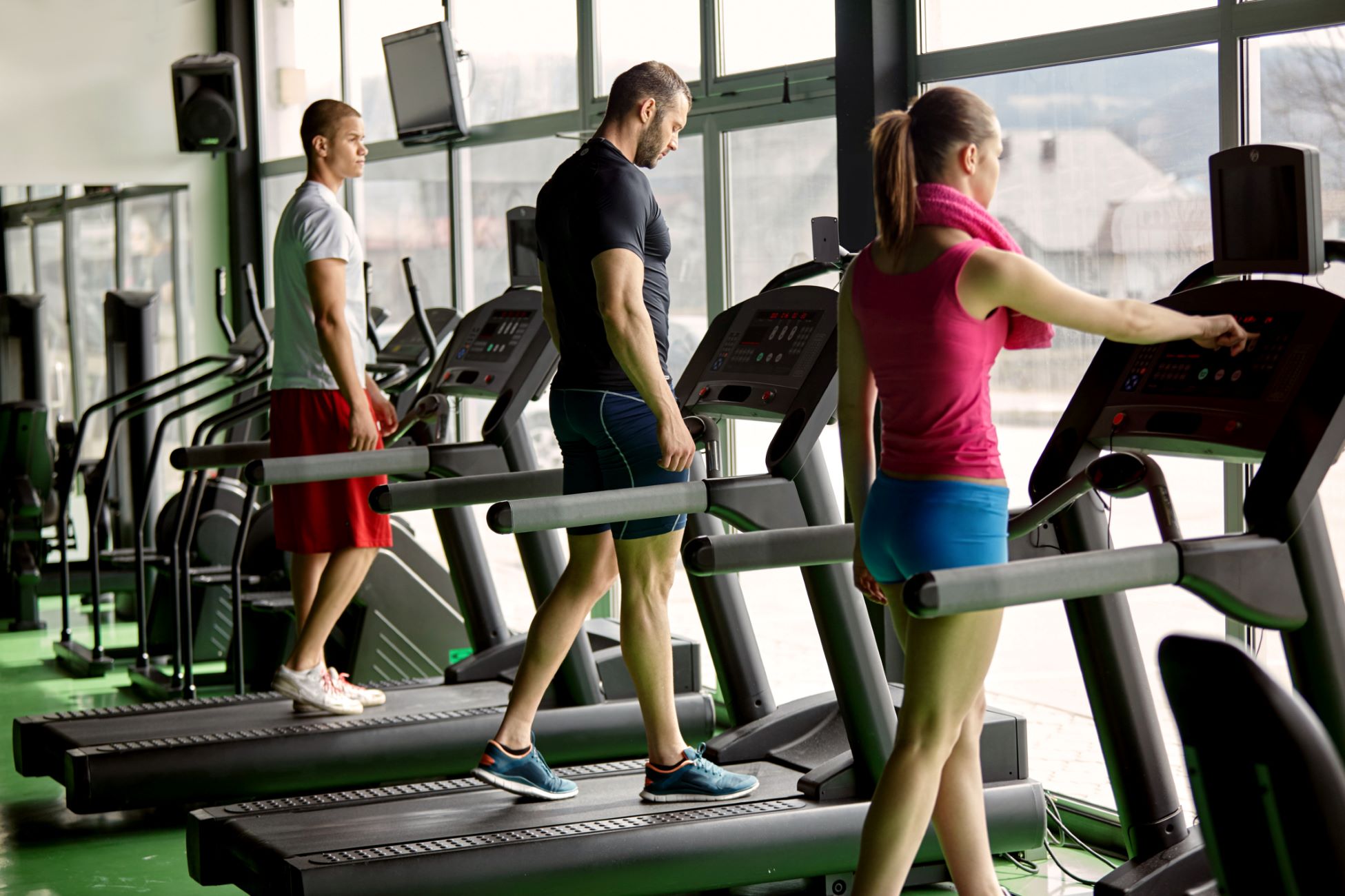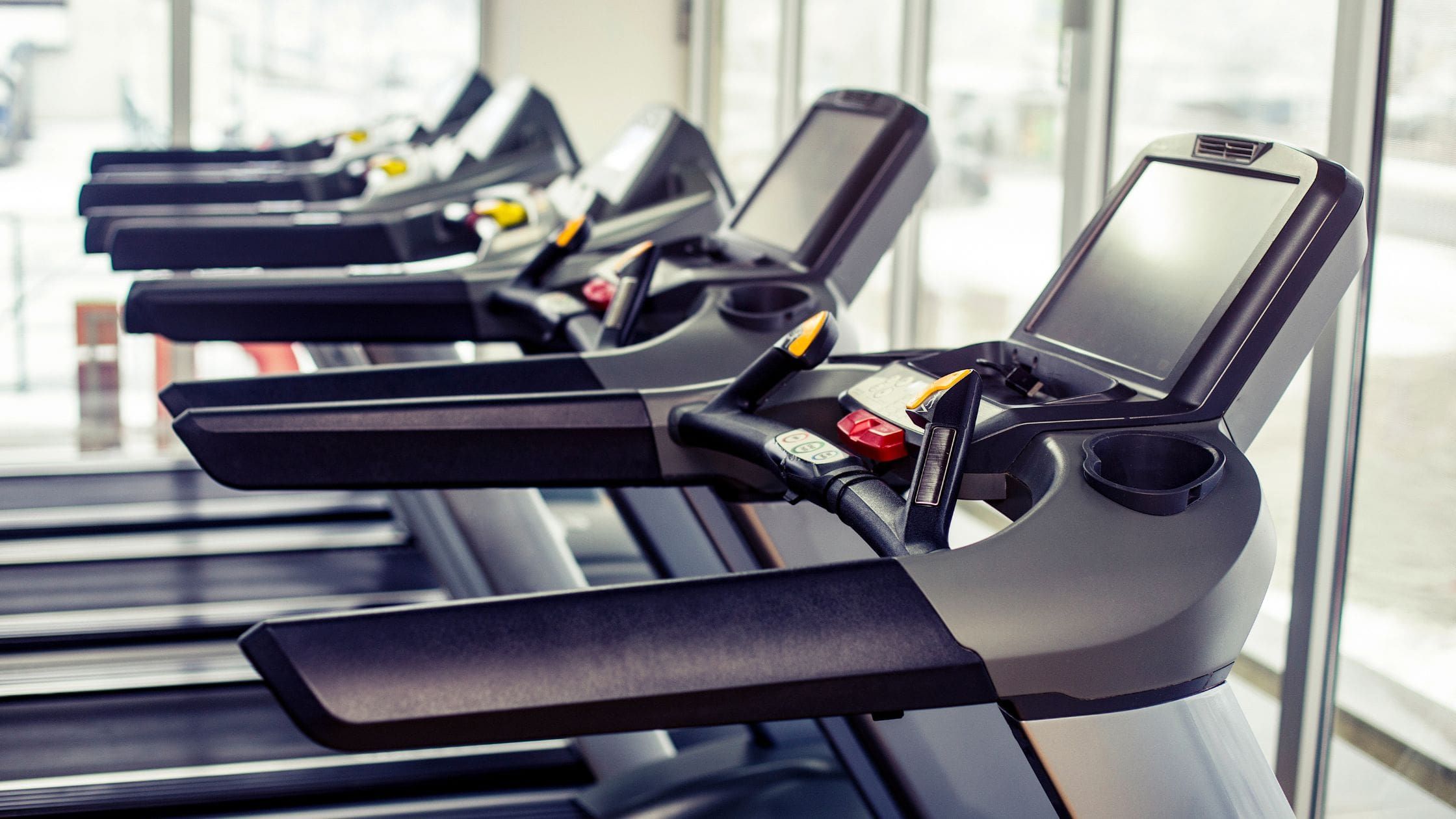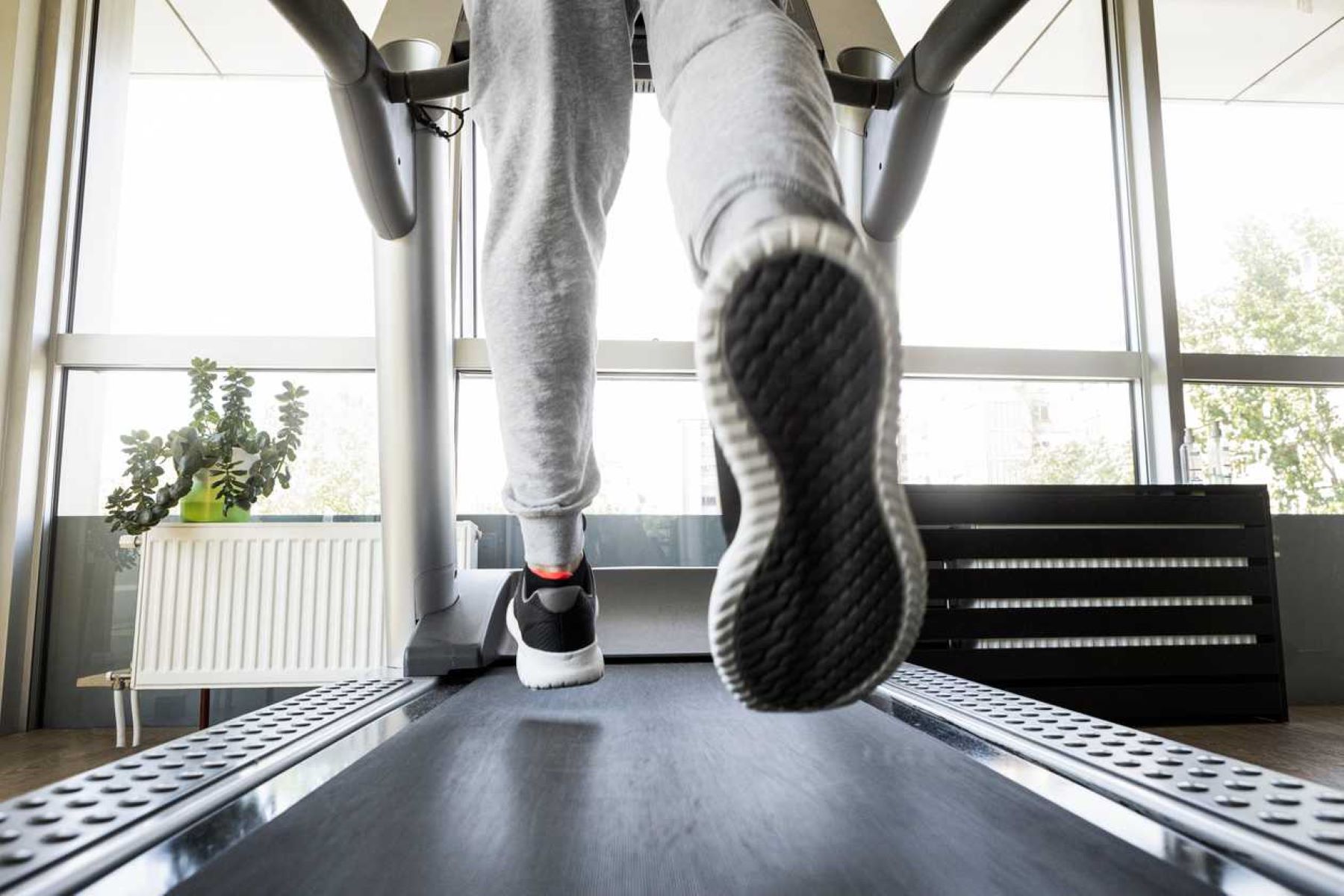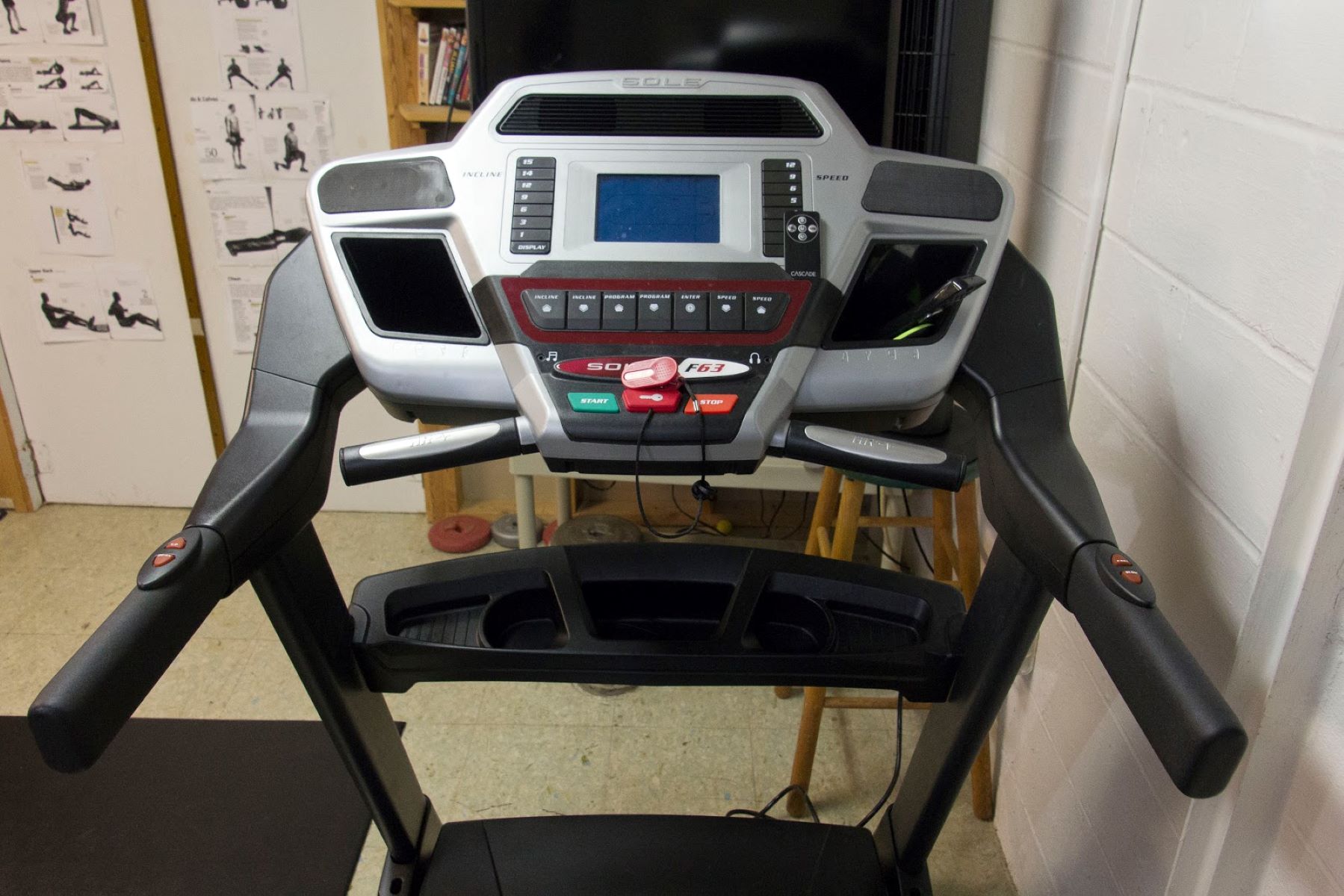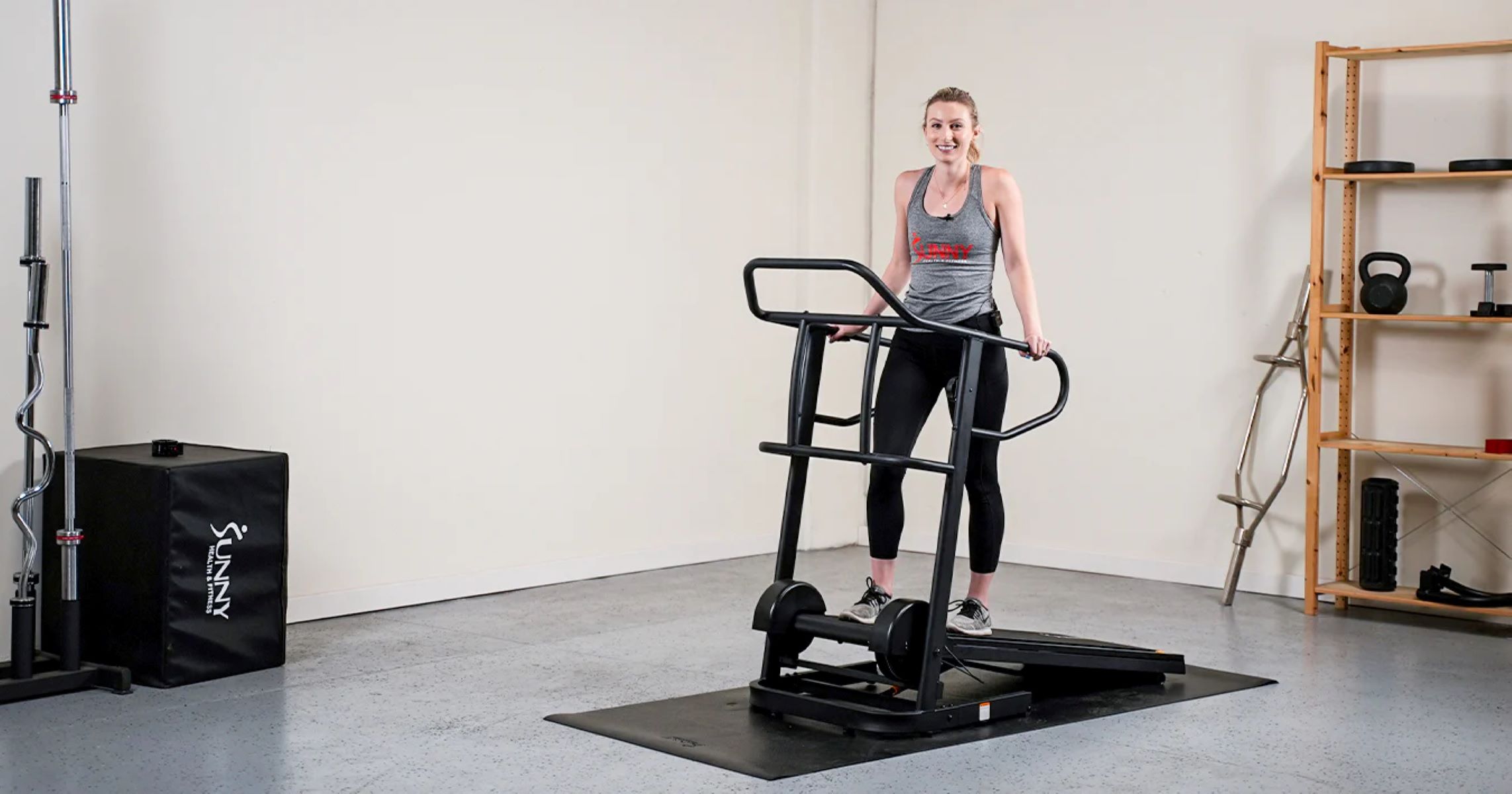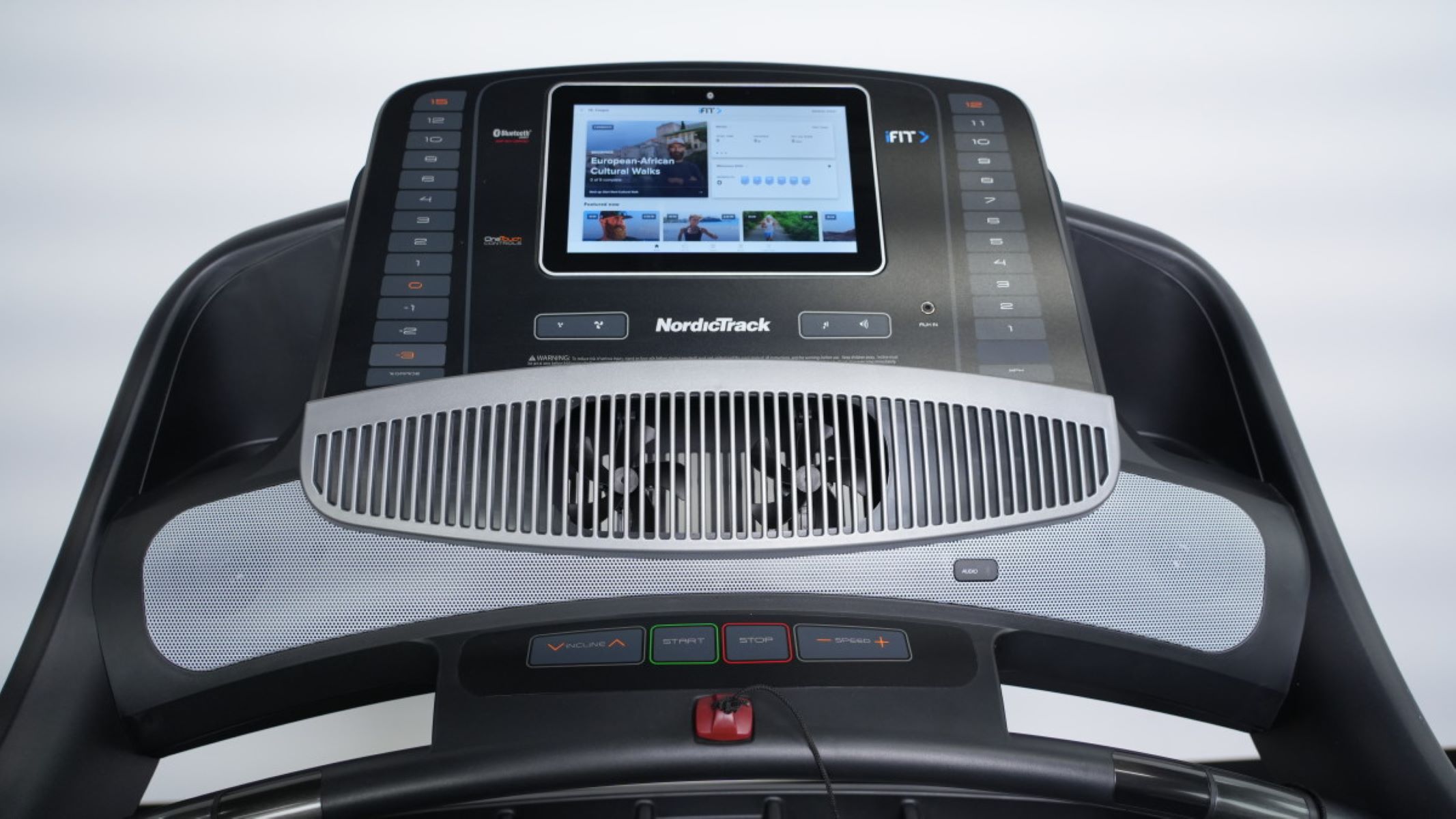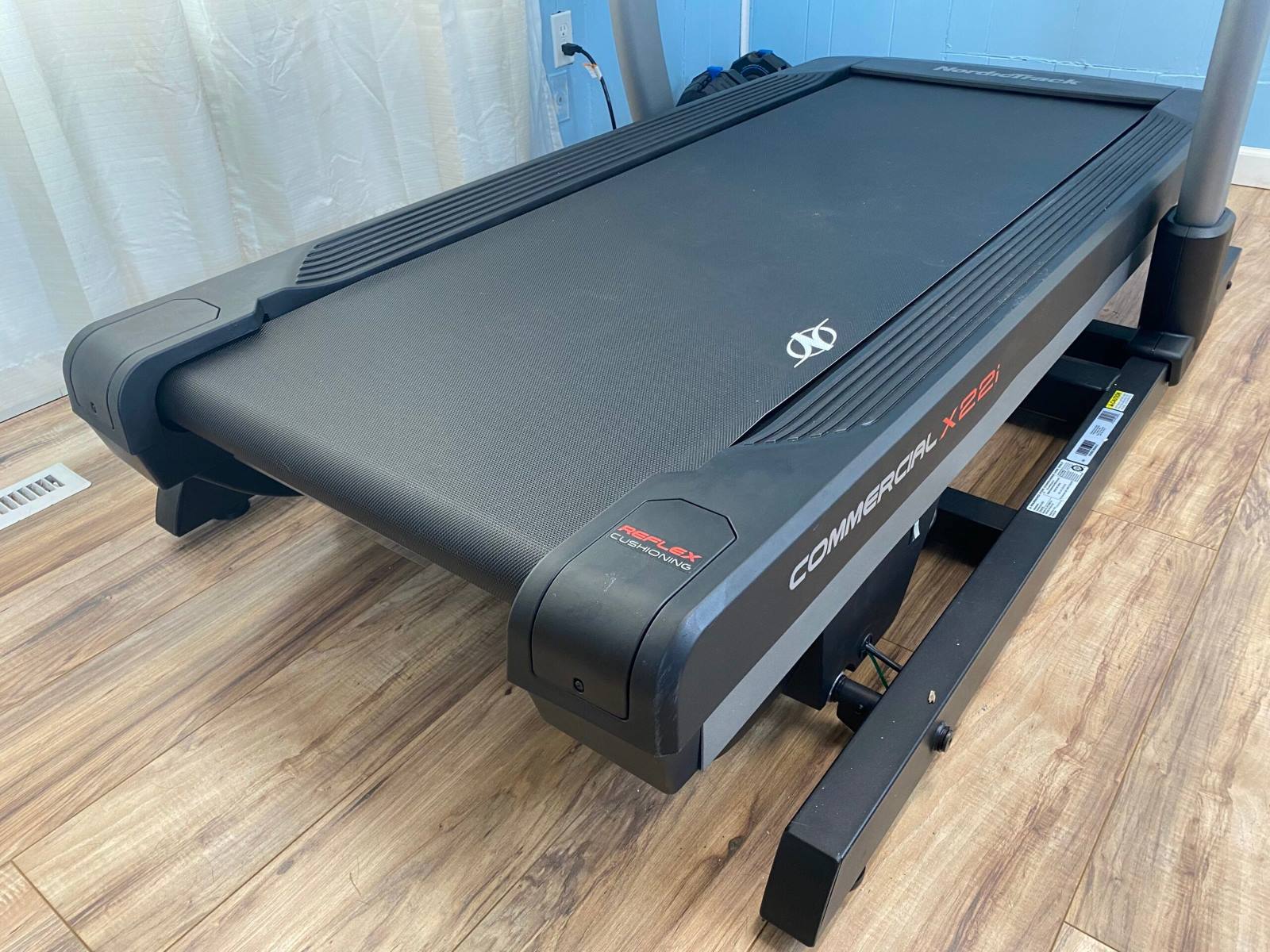

Featured
How To Run In A Treadmill
Modified: March 2, 2024
Learn how to effectively run in a treadmill with our Featured guide. Maximize your workouts and achieve your fitness goals with expert tips and techniques.
Introduction
Welcome to the world of treadmill running! Running on a treadmill is a convenient and effective way to stay fit and active, especially when outdoor conditions are not ideal. Whether you are a beginner or an experienced runner, the treadmill offers numerous benefits that can help you achieve your fitness goals.
Running on a treadmill provides a controlled and predictable environment, allowing you to monitor and adjust your pace and incline according to your preferences and fitness level. It eliminates the need to worry about uneven terrain, traffic, or weather conditions, providing a safe and reliable running experience.
Another advantage of treadmill running is the ability to track and measure your progress with built-in features such as distance, speed, and calories burned. This data can be invaluable in setting realistic goals and tracking your improvement over time. Additionally, many treadmills offer pre-programmed workouts and virtual training options, keeping your exercise routine engaging and challenging.
Whether you are training for a race, looking to lose weight, or simply want to improve your cardiovascular health, running on a treadmill can be tailored to suit your individual needs. With proper technique and a well-designed workout routine, you can maximize the benefits of treadmill running and achieve optimal results.
In this article, we will guide you through the essentials of running on a treadmill, from setting up the equipment to mastering the correct running form. We will also share tips for warm-up and cool-down exercises, provide sample workout routines for beginners and advanced runners, and discuss important safety precautions. So, put on your running shoes and let’s dive into the world of treadmill running!
Benefits of Running on a Treadmill
Running on a treadmill offers a wide range of benefits for individuals of all fitness levels. Whether you prefer indoor workouts or need a convenient alternative to outdoor running, treadmills provide an effective and efficient way to stay fit. Let’s explore some of the key benefits of running on a treadmill:
- Convenience: One of the main advantages of treadmill running is its convenience. With a treadmill at home or in your local gym, you have the freedom to exercise at any time that suits your schedule. Say goodbye to weather constraints, traffic, or safety concerns when running outdoors.
- Controlled Environment: Treadmills allow you to control the running environment, including speed, incline, and duration. This level of control makes it easier to track and monitor your progress, set specific goals, and adjust the intensity of your workouts as needed.
- Lower Impact: Running on the treadmill is generally lower impact compared to running on concrete or other hard surfaces. The cushioned surface of the treadmill helps absorb some of the shock and reduces stress on your joints, making it an ideal option for individuals with joint or bone conditions.
- Customizable Workouts: Treadmills offer a variety of pre-programmed workouts and customizable options to suit your fitness goals. Whether you want to focus on endurance, speed, or hill training, the treadmill allows you to easily adjust the incline and speed settings to create the perfect workout for you.
- Calorie Burn and Weight Loss: Running on a treadmill is an effective way to burn calories and lose weight. By incorporating interval training or high-intensity workouts, you can maximize calorie burn in a shorter amount of time compared to steady-state cardio exercises.
- Monitoring Progress: Many treadmills come equipped with built-in heart rate monitors, distance trackers, and calorie counters. These features allow you to monitor your progress and keep track of your fitness improvements over time, providing motivation and accountability.
By harnessing the many benefits of treadmill running, you can enjoy a convenient, controlled, and effective workout that suits your individual needs and fitness goals. So, lace up your running shoes and get ready to experience the incredible advantages of running on a treadmill!
Setting up the Treadmill
Before you start your treadmill running journey, it’s essential to properly set up the equipment for a safe and enjoyable workout. Follow these steps to ensure you have a smooth and hassle-free experience:
- Choose a Suitable Location: Find a dedicated space for your treadmill that is well-ventilated and has enough clearance around it. Ensure the flooring is level and stable to prevent any accidents during your workout.
- Read the Manual: Familiarize yourself with the manufacturer’s instructions by reading the treadmill manual thoroughly. Each treadmill model may have specific setup and usage instructions, so it’s important to understand them before proceeding.
- Power Source: Plug your treadmill into a grounded electrical outlet and ensure the power cord is not frayed or damaged. Follow the recommended voltage requirements specified in the manual.
- Adjust the Incline and Speed Settings: Set the initial incline and speed settings according to your fitness level and preference. Start with a low incline and slower speed if you are a beginner, gradually increasing as you become more comfortable and stronger.
- Attach the Safety Key: Most treadmills come with a safety key that needs to be attached to your clothing while you are running. This key will automatically stop the treadmill if it is pulled out, adding an extra layer of safety during your workout.
- Utilize Safety Features: Familiarize yourself with the emergency stop button or safety handles, depending on your treadmill model. These features can quickly stop the treadmill in case of any discomfort or emergency situation.
- Check the Belt Alignment and Tension: Ensure the treadmill belt is properly aligned and centered. It should not slip or rub against the sides during your workout. Adjust the tension if needed, following the instructions in the manual.
- Test the Console: Go through the various functions and settings of the treadmill console. Check if the digital display, speed controls, heart rate monitor, and other features are working correctly.
- Keep the Area Clean and Clutter-Free: Regularly clean the treadmill surface and surrounding area to remove any dust, debris, or sweat that may accumulate. This will help prolong the lifespan of your treadmill and ensure a hygienic workout environment.
By following these steps, you can set up your treadmill properly and ensure a safe and efficient running experience. Always consult the manufacturer’s instructions for any specific setup requirements and reach out to customer support if you have any queries or concerns. Now that your treadmill is ready to go, let’s move on to mastering the correct running form.
Proper Running Form
Maintaining proper running form on a treadmill is crucial for maximizing efficiency, preventing injuries, and getting the most out of your workout. Here are some key tips to help you achieve the correct running form:
- Posture: Stand tall and maintain an upright posture while running on the treadmill. Keep your head up, eyes focused straight ahead, and shoulders relaxed. Avoid slouching or leaning forward, as this can lead to unnecessary strain on your neck and back.
- Arms and Hands: Bend your elbows at a 90-degree angle and allow your arms to swing naturally. Avoid crossing your arms over your chest or letting them swing too wide. Your hands should be relaxed, lightly clenched, and should not cross the midline of your body.
- Foot Placement: Focus on landing with a midfoot strike, where your foot strikes the ground with the center of your foot. Avoid landing on your heels or toes, as this can lead to discomfort and inefficient movement. Maintain a quick turnover rate with shorter, quicker strides.
- Cadence: Aim for a cadence, or steps per minute, of around 180. This helps to minimize excessive vertical movement and reduces the risk of overstriding. Increasing your cadence can also help improve your running efficiency.
- Core Engagement: Engage your core muscles by gently contracting your abdominal muscles. This helps stabilize your upper body and maintain proper alignment while running. A strong core also plays a significant role in injury prevention and overall running efficiency.
- Breathing: Breathe naturally and rhythmically while running. Inhale deeply through your nose and exhale through your mouth. Avoid shallow breathing, as it can limit oxygen intake and lead to fatigue.
- Avoid Overstriding: Overstriding occurs when your foot lands too far in front of your center of gravity. This can put excessive stress on your joints and increase the risk of injury. Focus on landing with your foot underneath your body, allowing for a quick and efficient push-off.
- Listen to Your Body: Pay attention to any discomfort or pain during your workout. If you experience pain, adjust your form or slow down to avoid exacerbating the issue. It’s important to listen to your body and make necessary adjustments to maintain a safe and effective running form.
By practicing proper running form on the treadmill, you can reduce the risk of injuries, improve your running efficiency, and enjoy a more comfortable and effective workout. Remember to start gradually if you are new to treadmill running and gradually increase the duration and intensity to avoid overexertion. Now that you are familiar with the key aspects of running form, let’s move on to warm-up and cool-down exercises.
Warm-up and Cool-down Exercises
Before diving into your treadmill workout, it’s essential to warm up your body to prepare it for the upcoming intensity. Likewise, cooling down after your workout helps gradually bring your body back to a resting state. Let’s explore some effective warm-up and cool-down exercises:
Warm-up Exercises:
Performing a dynamic warm-up routine prior to your treadmill workout will help increase blood flow, loosen up your muscles, and improve your overall performance. Here are a few warm-up exercises to consider:
- Walking or Light Jogging: Start with a brisk walk or light jog on the treadmill for 5-10 minutes. This helps increase your heart rate and gradually warms up all the major muscle groups.
- Dynamic Stretches: Incorporate dynamic stretches that target the muscles used while running, such as leg swings, walking lunges, high knees, and butt kicks. Perform each stretch for 10-12 reps on each leg.
- Bodyweight Exercises: Include bodyweight exercises like squats, lunges, and hip circles to activate and engage the lower body muscles. These exercises help improve mobility and stability during your run.
- Arm Circles and Shoulder Rolls: Rotate your arms forward and backward in circular motions to engage your shoulder muscles. Perform shoulder rolls by moving your shoulders up, back, down, and forward to relieve tension and improve range of motion.
Cool-down Exercises:
Cooling down after your treadmill workout is equally important to gradually bring your heart rate back to normal and prevent muscle soreness. Here are a few cool-down exercises to consider:
- Walking or Slow Jogging: After your workout, bring down the intensity of your run and transition into a slow walk or light jog for 5-10 minutes. This helps your heart rate gradually return to a resting state.
- Static Stretches: Perform static stretches that target the major muscle groups used during your run. Hold each stretch for 15-30 seconds, focusing on the calves, quadriceps, hamstrings, hip flexors, and glutes.
- Foam Rolling: Use a foam roller to perform self-myofascial release on the muscles of your legs and hips. Roll slowly and apply gentle pressure to alleviate any muscle tension or tightness.
- Deep Breathing: Take a few minutes to practice deep breathing exercises, inhaling deeply through your nose and exhaling slowly through your mouth. This helps calm your body and promote relaxation.
Remember, the warm-up and cool-down exercises are an integral part of your treadmill workout. They help minimize the risk of injury, improve flexibility, and aid in recovery. Make sure to allocate sufficient time for both warm-up and cool-down activities to optimize your treadmill running experience.
Beginner Treadmill Workout Routine
If you’re new to treadmill running, starting with a beginner-friendly workout routine will help you build endurance, confidence, and gradually increase your fitness level. Here’s a sample beginner treadmill workout routine to get you started:
1. Warm-up:
Begin with a 5-minute brisk walk or light jog on the treadmill to warm up your muscles and increase your heart rate.
2. Jog-Walk Intervals:
Alternate between jogging and walking intervals to gradually increase your cardiovascular endurance:
- Interval 1: Jog at a comfortable pace for 1 minute.
- Interval 2: Slow down to a brisk walk for 2 minutes to recover.
- Repeat: Repeat this jog-walk cycle for a total of 20-30 minutes.
As you progress, gradually increase the jogging interval time and decrease the walking interval time. Aim to eventually achieve a continuous jogging pace.
3. Incline Walk:
To incorporate some incline training, set the treadmill to a moderate incline (around 3-5%), and briskly walk for 10-15 minutes. The incline will engage different muscles and increase the intensity of your workout.
4. Cool-down:
Finish your workout with a 5-minute slow walk on the treadmill to bring your heart rate back to normal and allow your muscles to gradually cool down.
This beginner treadmill workout routine is designed to help you improve your cardiovascular fitness, build endurance, and get comfortable with treadmill running. It’s important to listen to your body and adjust the speed and intensity according to your fitness level and comfort.
Remember to stay hydrated throughout your workout and practice proper breathing techniques to optimize your performance. As you become fitter and more comfortable, you can gradually increase the duration and intensity of your workouts, incorporating more challenging exercises and workouts.
Consult with a fitness professional or trainer if you have any specific concerns or need guidance in tailoring a workout routine to your individual needs and goals. Now, let’s explore some advanced treadmill workout techniques for those who are ready to take their running to the next level.
Advanced Treadmill Workout Techniques
If you’re an experienced runner looking to challenge yourself and take your treadmill workouts to the next level, incorporating advanced techniques can help you improve speed, endurance, and overall performance. Here are some advanced treadmill workout techniques to consider:
1. Interval Training:
Interval training involves alternating between periods of high-intensity running and recovery periods. This technique helps improve cardiovascular fitness, burn more calories, and increase speed. Here’s an example of an interval workout:
- Warm-up: Start with a 5-minute jog or brisk walk on the treadmill.
- Intervals: Alternate between sprinting at your maximum effort for 30 seconds and recovering at a slow jog or walk for 1 minute. Repeat this cycle for 10-15 minutes.
- Cool-down: Finish with a 5-minute slow walk to gradually bring your heart rate back to normal.
2. Hill Repeats:
Simulating uphill running by adjusting the incline on the treadmill will help strengthen your leg muscles and improve endurance. Here’s how to incorporate hill repeats into your workout:
- Warm-up: Begin with a 5-minute steady jog to warm up your muscles.
- Hill Repeats: Set the treadmill to a challenging incline (around 6-8%) and run at a moderate to high intensity for 1-2 minutes. Recover by reducing the incline and running at an easy pace for 1 minute. Repeat the cycle 6-8 times.
- Cool-down: Finish with a 5-minute slow jog or walk to cool down your body.
3. Tempo Runs:
Tempo runs are performed at a comfortably hard pace, just below your maximum effort. These runs help improve your lactate threshold and overall running speed. Here’s how to incorporate a tempo run into your treadmill workout:
- Warm-up: Start with a 5-minute slow jog or brisk walk to warm up your muscles.
- Tempo Run: Increase the treadmill speed to a pace that feels comfortably hard but sustainable. Maintain this pace for 15-20 minutes.
- Cool-down: Finish with a 5-minute slow jog or walk to gradually cool down your body.
Remember to properly warm up before each advanced treadmill workout and cool down afterward to prevent injuries and aid recovery. Hydrate adequately and listen to your body to avoid overexertion. It’s recommended to incorporate these advanced techniques into your workout routine gradually, allowing your body time to adapt to the increased intensity.
Consult with a fitness professional or coach for personalized guidance and to tailor these techniques to your specific goals. Now that you have some advanced treadmill workout techniques in your arsenal, let’s discuss important safety tips and precautions to ensure a safe and injury-free running experience.
Safety Tips and Precautions
While treadmill running is generally a safe and convenient option, it’s important to take certain precautions to minimize the risk of injuries and ensure a safe workout. Here are some essential safety tips to keep in mind when using a treadmill:
- Read the Manual: Familiarize yourself with the specific model and features of the treadmill by carefully reading the user manual. Understanding the safety features and usage guidelines is crucial for a safe and efficient workout.
- Start with a Warm-up: Always start your treadmill workout with a proper warm-up session to prepare your muscles and cardiovascular system for the upcoming intensity. This helps prevent muscle strains and injuries.
- Use Safety Features: Attach the safety key to your clothing while running on the treadmill. This key is designed to automatically stop the treadmill if it is pulled out, providing immediate safety in case of any mishap or imbalance.
- Stay Hydrated: Drink water before, during, and after your workout to stay properly hydrated. Keep a water bottle within reach so you can sip water throughout your run, but be cautious not to spill it on the treadmill surface.
- Wear Suitable Attire: Dress in comfortable workout clothing and supportive athletic shoes that provide stability and cushioning. Avoid loose-fitting clothing that can get caught in the treadmill belt.
- Watch Your Step: Pay attention to your foot positioning and be mindful of where you place your feet on the treadmill belt. Avoid stepping too close to the edges to prevent any missteps or accidents.
- Start Slow and Gradual: If you are new to treadmill running or returning from an injury, start with shorter and slower workouts, gradually increasing the duration and intensity over time. Allow your body to adapt and progress at a comfortable pace.
- Maintain Proper Form: Always maintain proper running form to prevent any strain on your joints or muscles. Keep your posture aligned, engage your core, and ensure your foot lands in the middle of the treadmill belt with each step.
- Listen to Your Body: Pay attention to any pain, discomfort, or dizziness during your workout. If you experience any unusual sensations, stop immediately and seek medical advice if needed. It’s better to be safe than sorry.
- Clean and Maintain the Treadmill: Regularly clean the treadmill surface and surrounding area to remove any dust, dirt, or sweat that may have accumulated. Additionally, keep the treadmill well-maintained by following the manufacturer’s guidelines for lubrication and maintenance.
By following these safety tips and precautions, you can enjoy a safe and injury-free running experience on the treadmill. Remember, your safety should always be a top priority, so use common sense, listen to your body, and take necessary precautions to ensure a successful workout. Now that you are equipped with these safety guidelines, it’s time to lace up your shoes and get started on your treadmill running journey!
Conclusion
Running on a treadmill provides a convenient and effective way to stay fit and active regardless of weather conditions or time constraints. With the wide range of benefits it offers, including convenience, controlled environment, customizable workouts, and the ability to track progress, a treadmill can be a valuable addition to your fitness routine.
By setting up the treadmill correctly, maintaining proper running form, and incorporating warm-up and cool-down exercises, you can enhance your running experience and minimize the risk of injuries. Whether you’re a beginner or an advanced runner, there are workout techniques suited to your fitness level that can be performed on the treadmill.
As with any form of exercise, it’s important to prioritize safety by following the recommended guidelines and using the available safety features. By listening to your body and taking necessary precautions, you can enjoy treadmill running with peace of mind.
So, lace up your running shoes, adjust the incline and speed settings, and embark on your treadmill running journey. Whether you’re aiming to improve endurance, lose weight, or simply enjoy a cardiovascular workout, the treadmill provides a versatile platform to help you achieve your fitness goals.
Remember to start slow, gradually increase the intensity, and challenge yourself as you progress. Stay consistent, stay motivated, and enjoy the benefits of treadmill running – better cardiovascular health, increased strength, improved endurance, and a positive impact on your overall well-being.
Now that you’re equipped with the knowledge and techniques to make the most of your treadmill workouts, it’s time to put them into practice. So, step onto the treadmill, unleash your inner runner, and experience the joy and benefits of indoor running!
